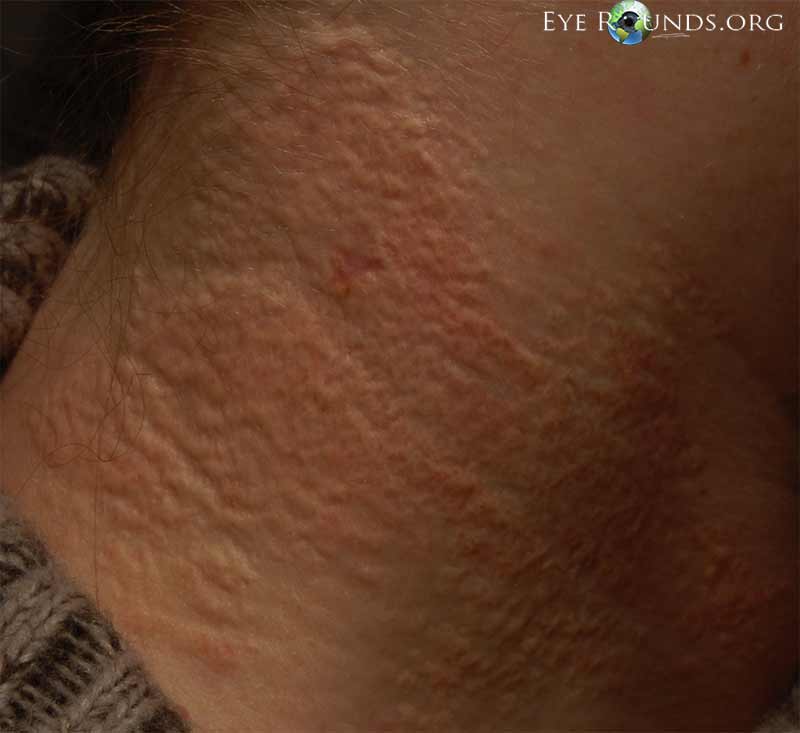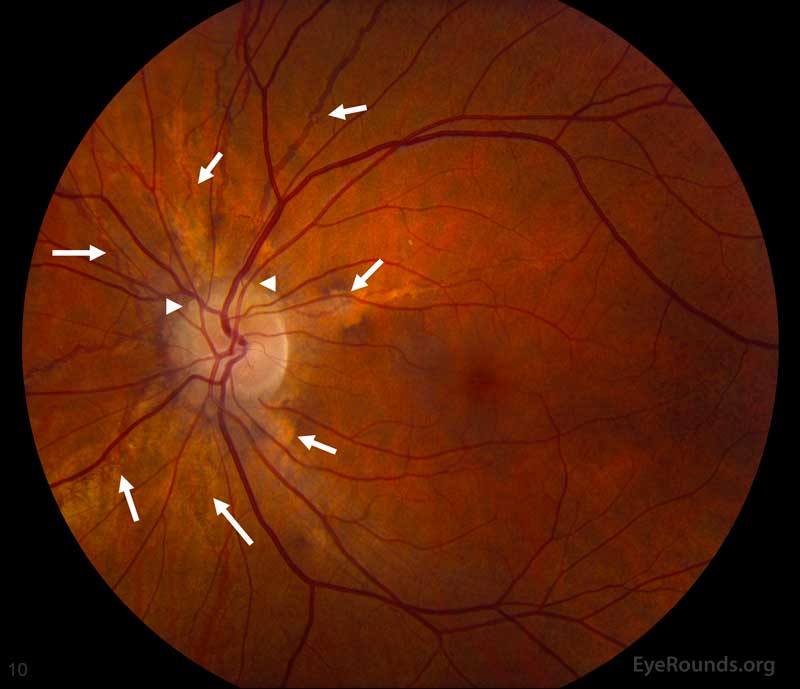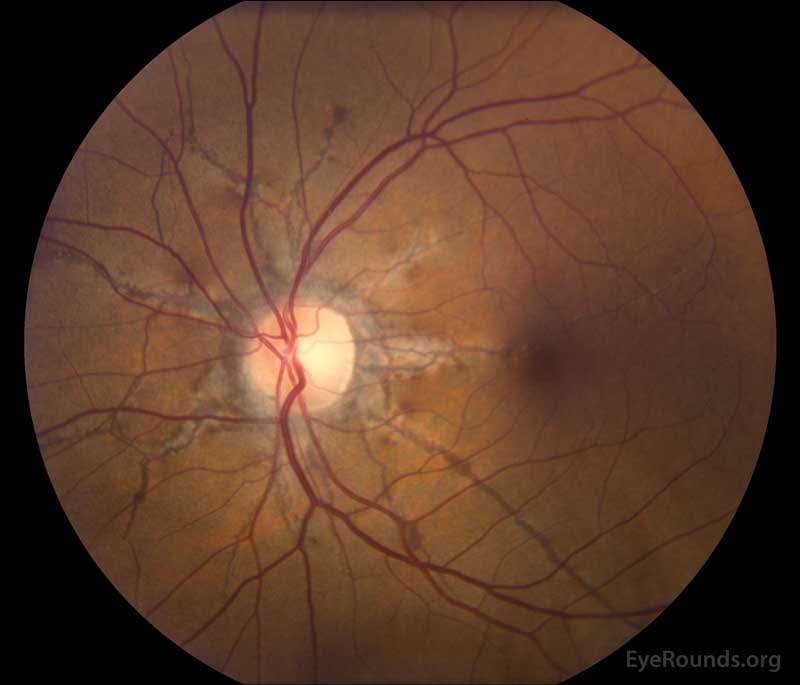Angioid Streaks and Associated Conditions
Update: Nicole Morrow, BS; Lorraine M. Provencher, MD
Original Contributor: Eric Chin, MD
Photographer: Cindy Montague, CRA
Update: May 15, 2018; Original Post: August 15, 2013
Angioid streaks are visible crack-like breaks in Bruch's membrane due to an atrophic overlaying retinal pigment epithelium. They radiate from the optic nerve and can have a peau d'orange appearance originating from the macula and extending temporally (Figures 1 and 2). They are termed angioid streaks for their resemblance to retinal vasculature. Associated optic disc drusen are common (Figure 1 and 3). Patients with angioid streaks are typically asymptomatic, even if the streaks cross into the foveal region. Associated complications include choroidal neovascularization and choroidal rupture with minimal trauma.
Angioid streaks are most commonly associated with pseudoxanthoma elasticum (PXE). PXE is also known as Gronblad-Strandberg syndrome and is caused by a mutation in the ABCC6 gene. Cutaneous findings typically precede ocular findings by a few years. The cutaneous findings will be small, yellowish papular lesions with skin laxity affecting the neck, axilla, groin, and flexural creases (Figure 4). PXE patients may also have gastrointestinal and cardiovascular findings.
 |
In addition to PXE, angioid streaks are associated with Ehler's Danlos syndrome, Paget's disease of bone, sickle cell anemia, and idiopathic (PEPSI is a helpful memory mnemonic). Other associations include: abetalipoproteinemia, acromegaly, diabetes mellitus, facial angiomatosis, hemochromatosis, hemolytic anemia, hereditary spherocytosis, hypercalcinosis, hyperphosphatemia, lead poisoning, myopia, neurofibromatosis, senile elastosis, Sturge-Weber syndrome, and tuberous sclerosis.
Reference(s)
- Freund, BK, Sarraf, D, Mieler, WF, & Yannuzzi, L. (2017). Degeneration. The Retinal Atlas (2nd ed, pp 651-761). Elsevier Inc.
- Georgalas, I, Papaconstantinou, D, Koutsandrea, C, Kalantzis, G, Karagiannis, D, Georgopoulus, G, & Ladas, I. Angioid streaks, clinical course, complications, and current therapeutic management. Ther Clin Risk Manag. 2009; 5: 81-89.

Ophthalmic Atlas Images by EyeRounds.org, The University of Iowa are licensed under a Creative Commons Attribution-NonCommercial-NoDerivs 3.0 Unported License.







